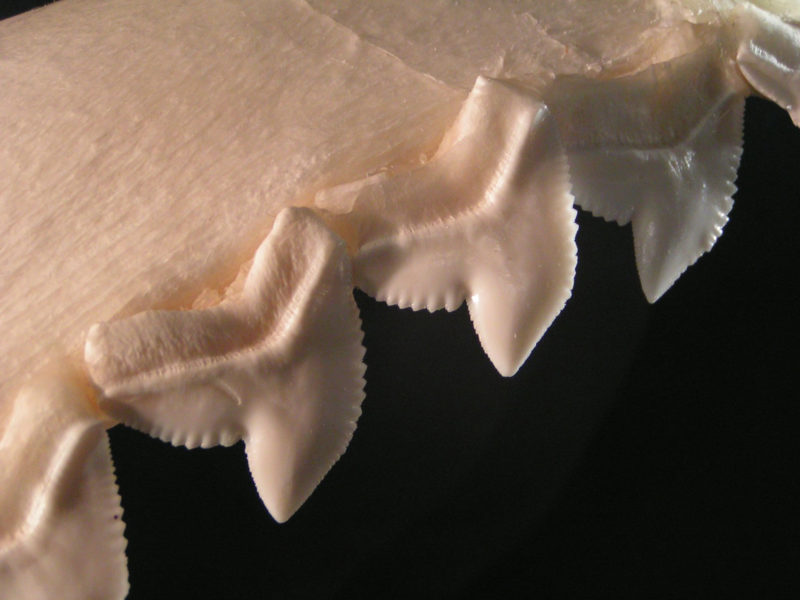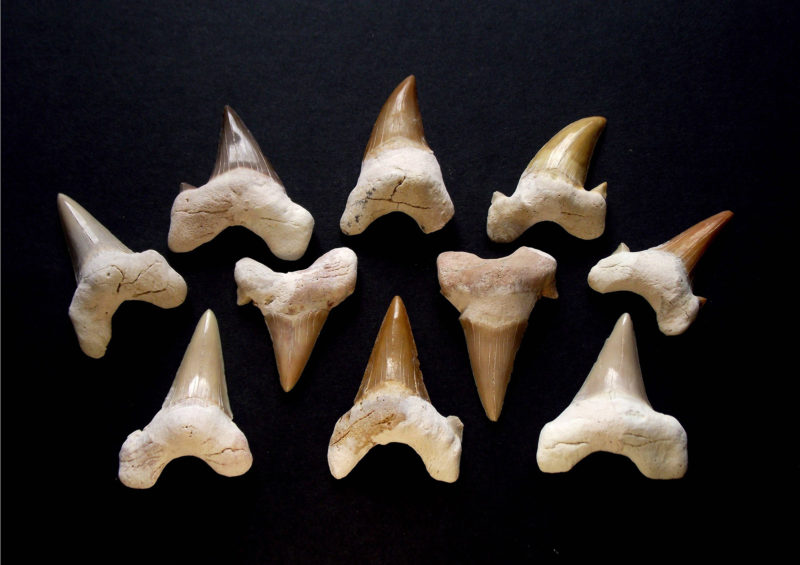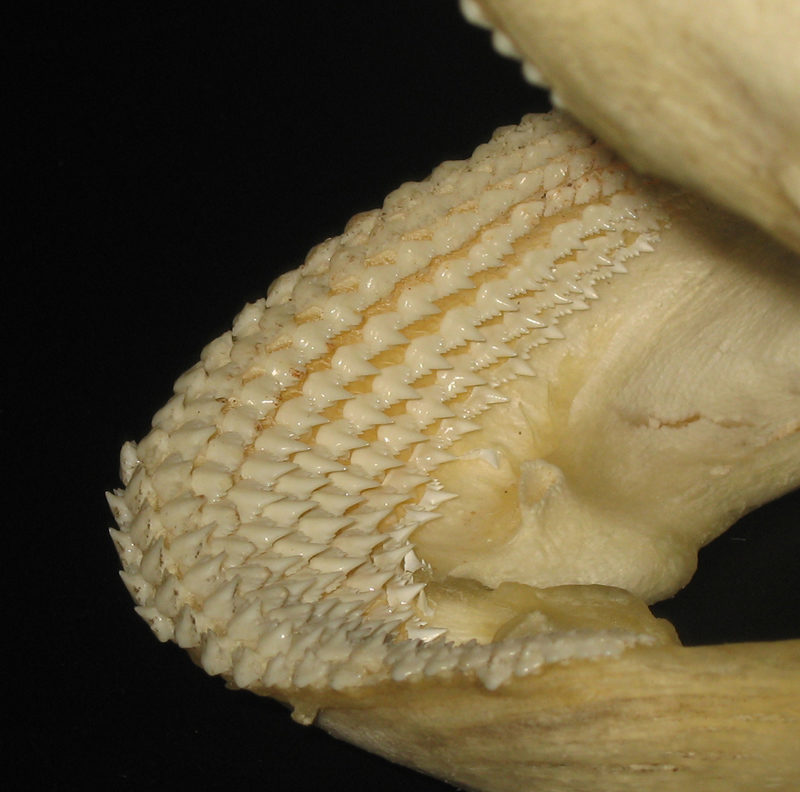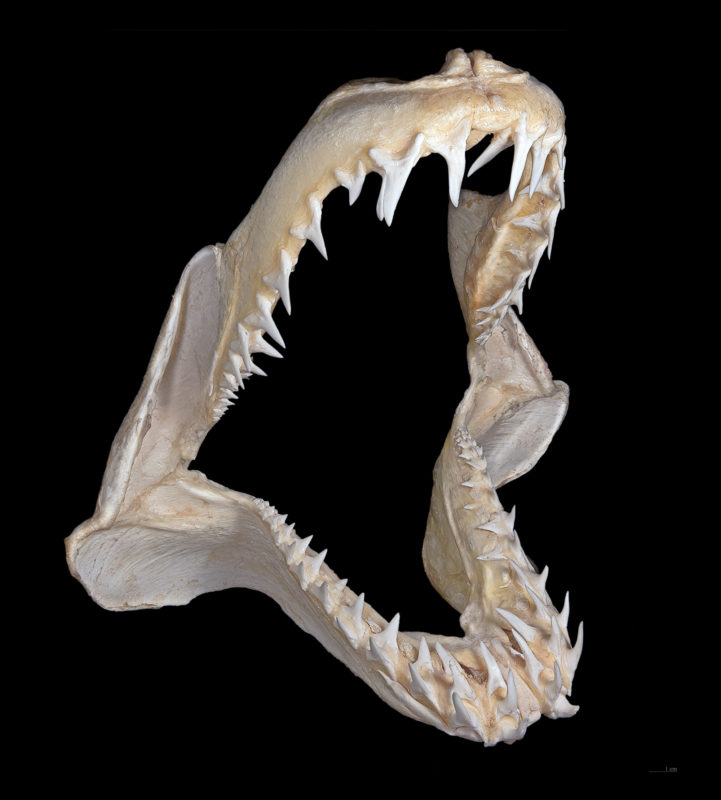Tuesday, July 31, 2018
Washington Post puts emphasis on creating paths to subscription
from World News Publishing Focus by WAN-IFRA - World Association of Newspapers and News Publishers https://ift.tt/2Kcsemo
Scuba Diving at Coiba National Park
Coiba, a rainforest-draped island off the Panama coast, is home to white-sand beaches and waters teeming with marine life. This island was a prison for some of Panama’s most notorious criminals until 2004. In 2005, it became a UNESCO World Heritage Site and part of Coiba National Park, which encompasses 38 islands. Scuba diving at Coiba National Park is truly world class.
You can access Coiba via Panama liveaboard diving, which involves visiting Coiba Island itself and exploring the 37 surrounding islands and islets. This area of Panama offers fantastic diving at a variety of sites with sharks, rays, whales, dolphins and more.
When to visit
Panama is hot and humid year-round, with a rainy season from May to November and a dry season from December to April. Diving conditions are excellent all year, though large numbers of humpback whales mate and give birth around Coiba Island from July to October each year.
Water temperature varies from around 81 to 84 F (27 to 29 C) but noticeable thermoclines can plunge the temperature to around 60 F (16 C). Be sure to bring exposure suits to accommodate a wide range of temperatures.
The diving and weather conditions at Panama can be unpredictable and challenging, making this destination best suited to experienced divers. There are, however, some sites suitable for less experienced divers and snorkelers. Here are our picks for the best sites at Coiba Island.
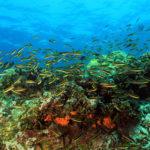

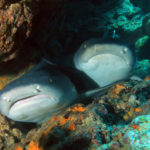
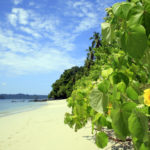
Mona Lisa
This submerged island of rocks is a huge cleaning station, with large schools of butterfly and king angelfish on the southern slope of the dive site. Schools of barracuda, jacks and spadefish visit the stations; divers can see turtles, rays, whitetip sharks and plenty of macro life as well. This site makes for a great night dive to watch hunting whitetip sharks.
The northern slopes reach depths of 46 feet (14 m) and the southern side slopes down to 100 feet (30 m). Dive depths can range from 16 to 60 feet (5 to 18 m) and the site is protected from currents, making it accessible to less-experienced divers.
Hill Rock
Hill Rock is known for unique volcanic landscapes, with large rocks that are home to numerous schools of fish. Divers can see schools of triggerfish, spadefish, barracuda, jacks and snapper. Large nurse sharks and whitetip sharks also visit the site regularly. Maximum dive depth is 72 feet (22 m) and it’s best to dive at high tide because of the surge from the south.
Cathedral Rock
This is one of Coiba’s most popular dive sites, consisting of two pinnacles that look like the entrance to a cathedral. Corals cover the entire area and the crevices are full of marine life. Hammerheads also visit a local cleaning station. Currents can be fairly strong at this dive site, which starts at 43 feet and descends to around 80 feet (13 to 25 m), making it best for experienced divers.
Jacob’s Ladder
This site is very close to some of the park’s deepest waters and is exposed to oceanic currents and open ocean swells. White gorgonians cover the pinnacle and the exposed conditions bring in schools of tuna, snapper and barracuda, plus sailfish and marlin. Galapagos and tiger sharks often visit the site as well. The pinnacle begins at 50 feet and drops to 130 feet (16 to 40 m), and the site is suitable for advanced divers only.
The Pyramids
These three pinnacles shaped like pyramids rise out of the depths and are washed by currents that attract all sorts of marine life. The dive site has some of the best hard- and soft-coral diversity in the area, along with plentiful schools of reef fish that attract large predators. Hammerheads and Galapagos sharks are common here.
Maximum depth is around 60 feet (18 m) but the strong currents make this dive site more suitable for experienced divers.
Wahoo
This site off Canales Island inside the park features gentle slopes, descending down to a sandy bottom at 92 feet (28 m). There is plenty of marine life, including frogfish, green morays, jacks, barracuda and spadefish. Divers descending deeper can find eagle rays, manta rays, groupers, green turtles, whitetips and bull sharks. Although this site is exposed to currents, it is still suitable for all experience levels, as well as snorkelers.
Mali Mali
This dive site on Rancheria Island has one of the most colorful reefs in the park. Marine life includes seahorses, mobula rays, whitetip sharks, milkfish, snappers and jacks. It is possible to dive the depths of the reef, though it is ideal for shallow and colorful dives. This site is suitable for all dive experience levels and snorkelers.
By guest authors from liveaboard.com
Divers and writers at LiveAboard.com contributed this article.
The post Scuba Diving at Coiba National Park appeared first on Scuba Diver Life.
from Scuba Diver Life https://ift.tt/2OxKAkX
Maria Ressa on Facebook, Truth and the Crisis of Democracy
from World News Publishing Focus by WAN-IFRA - World Association of Newspapers and News Publishers https://ift.tt/2n46kIZ
Monday, July 30, 2018
Turn Your Passion into a Business: Investing in the Dive Industry
So, you’re a passionate diver who wants to make a lifestyle change and you’d like to make an income from investing in the dive industry. There are many ways to make a return on a dive-business investment and combine your passion with work, though, as with any entrepreneurial venture, it takes hard work, commitment, and perseverance to run a dive business. Here’s an overview of the different types of business models, usually open for investment, common in the dive industry.
Dive resort
Investing in — and relocating to — a dive resort is one way to change your lifestyle and become involved in a dive business. Dive resorts typically generate revenues from selling accommodation/dive packages. They may also offer dive training and souvenirs Some resorts enhance their dive packages further by adding unique programs like summer kid’s camps and specialized events, such as technical-diving or photography and videography workshops. Knowledge of local legislation and labor laws is essential when investing in foreign countries. You must also become versed in local culture and etiquette. Knowledge of hospitality, resort/hotel management, and marketing skills all helps with this type of dive business, as does attending dive shows and conferences to network with travel agents and dive centers.
Dive shop
If you’re not looking to relocate, local dive shops are usually already established in larger metropolitan areas. These businesses depend on dive-equipment sales, training, and travel to generate revenue. This type of business will require retail experience, inventory management, and sales knowledge. You’ll also need to have dive instructors on staff to offer training and lead group trips. Many retailers in this internet age must add value to their retail services to compete against online sellers. Offering dive travel to exotic destinations adds lifestyle to this type of business and also keeps clientele active and generates revenues during off-seasons.
Invest in yourself
Although entry-level scuba instructors work for passion and lifestyle more than money, if you specialize and gain time and experience in a specific diving field you can increase your earning potential. Instructors who build experience in areas such as photography/videography and technical diving, or advance become Instructor Trainers themselves, can make more than just a living and either work freelance or affiliate with a dive center/resort.
Yacht/liveaboard
For those with maritime or sailing experience, investing in a liveaboard or sailboat/yacht that offers diving charters is a chance to combine two passions with a business model. This type of operation allows freedom to travel and relocate or to customize diving trips and itineraries. Yachts and liveaboards do have high maintenance costs and require additional skills as well like hospitality and mechanical knowledge for boat maintenance.
Travel agent
Our final business model combines the passions of travel and diving. If you’ve got extensive travel experience, attention to detail and enjoy logistical work and event planning, then promoting and selling dive travel can be profitable with minimal investment. Startup costs and can include a physical location or you can conduct business purely online. Travel agents work with dive resorts and liveaboards to book individuals, couples, or groups for dive trips, taking a commission. Attending dive shows, conventions and travel/trade shows is essential, as well as good marketing and communication skills. Travel agents often receive complimentary familiarization trips as a benefit of working within the industry.
Whichever business piques your interest, run your due diligence on any potential investment, especially in foreign countries. Pay attention to local customs, cultures and employment laws, as well as tax laws. Work in the field and country you want to invest in for at least several months before doing so to be sure that turning a passion into a business doesn’t become an unwanted burden. With the right research and business model and lots of hard work, you’ll find the dive industry is a great way to make a living.
Author Andy Phillips is a PADI Course Director and Technical Instructor Trainer. He’s got degrees in business/marketing and e-commerce, as well as over 20 years of professional and business experience in the dive industry. He offers consulting services for new dive businesses or people seeking expert advice for entering the dive industry.
The post Turn Your Passion into a Business: Investing in the Dive Industry appeared first on Scuba Diver Life.
from Scuba Diver Life https://ift.tt/2LCg6Rd
Sunday, July 29, 2018
Top Five Dive Sites in Komodo
In a country as vast and geographically diverse as Indonesia, dive sites even within the famed Coral Triangle differ widely. Komodo National Park, between Flores and Sumbawa Islands, offers amazing reefs, incredible biodiversity, vibrant fish life, mantas, and exhilarating currents. If you compared Indonesia’s dive regions to an amusement park, then Komodo is the white-knuckle roller-coaster ride of the bunch. With that in mind, here are our picks for five top dive sites in Komodo but bear in mind that currents may be too strong some days or not suitable for all divers.
Tatawa Kecil
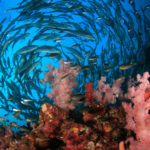
This small island is infamous for ripping currents — not just in one direction, but cross- directionally and strong down currents as well. One of our group — an experienced instructor — was pulled down from 40 feet (12 m) to 80 feet (24 m) fast. At the half-moon each month and during slack tides, Tatawa Kecil suitable for all divers; at other times only extremely-experienced divers should attempt a dive here. The site has healthy hard corals, reef sharks, large trevallies, and tunas. A cave at 80 feet (24 m) features pygmy seahorses and on the northern side at 75 feet (22 m) there’s a cleaning station used by sweetlips. In season mantas also frequent this area.
Batu Bolong
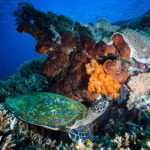
Batu Bolong is a classic dive Komodo dive and rightly world famous. From the surface it’s an unassuming small rock, but underneath is a vibrant pinnacle with a north and south face. You’ll usually only dive one side at a time due to the currents, though at slack tides you might be able to spiral the pinnacle. The dive usually starts at 80 to 100 feet (24 to 30 m), and you’ll ascend zig-zag fashion back and forth across the healthy and colorful reef, turning to avoid the current.
Healthy soft and hard corals cover the pinnacle and there’s great macro life as well, including seahorses and nudibranchs. Giant tuna, Napoleon wrasse, reef sharks and hawksbill turtles are common as well. The shallows feature beautiful plate and branching coral formations and hundreds of schooling fish. From the surface you can often see the water ‘boiling’ like in a jacuzzi due to the currents and your operator may choose to cancel or reschedule the dive.
Cauldron/Shotgun
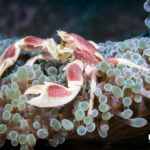
This is another Komodo classic thanks to the exhilarating current that rockets divers through part of the dive site. The site sits in a channel between two islands in the north of Komodo’s marine park. You’ll begin on a coral reef and move with the current into a sandy bowl, called the cauldron, at about 60 to 75 feet (18 to 20 m). From here the current intensifies as you move into “the shotgun,” flying up a steep wall and through a break in the reef. If possible, you can use a reef hook here to look back into the cauldron, but at times the current is just too strong. Enjoy the ride, where you might see mantas, schooling fish and barracuda as you glide past. The current will deposit you and your dive group onto another section of the reef with vibrant marine life, healthy corals, and great macro creatures.
Manta Alley/Point
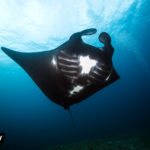
As the name suggests, mantas are common here from September to January, although off-season encounters are possible as well. In peak months, divers often report up to 20 mantas, circling and swimming around on the dive. It’s a drift dive and currents can be strong, with a maximum depth of around 40 to 50 feet (12 to 15 m). Reef hooks or pointers are best for stopping to observe the mantas. The site also features healthy coral bommies, schooling fusiliers, triggerfish, wrasse, and reef sharks.
Castle Rock
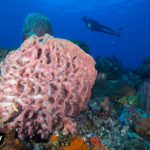
Castle Rock is one of the largest seamounts in the park and another Komodo highlight. The bottom is around 100 feet (30 m) and rises to 15 feet (5 m), which makes for fantastic safety stops. The currents here are usually mild to strong and visibility is generally quite good. The seamount is a haven for fish such as grouper and wrasse, along with sharks and the occasional dolphin. Expect healthy corals and plentiful macro life as well.
The post Top Five Dive Sites in Komodo appeared first on Scuba Diver Life.
from Scuba Diver Life https://ift.tt/2Lut1V4
Saturday, July 28, 2018
What You Can Do for Sharks
We’re in the full swing of beach season, and every year, without fail, news outlets will post stories about the dreaded shark fin-sighting on the horizon, striking fear into the hearts of potential beachgoers and causing panic on the shore.
Instead of inspiring fear, however, these shark sightings should inspire hope. Not only do sharks play extremely important roles in balancing ocean ecosystems as top predators, they also play important roles in coastal-tourism economies. Shark-based tourism is a booming industry in the U.S., as more and more divers want to swim with these magnificent creatures. But shark tourism depends wholly on healthy shark populations, and unfortunately, many shark species are in trouble.
Wide-ranging threats
Right now, it’s especially impossible to ignore that our oceans are facing an array of threats, including plastic pollution, threats to open new U.S. waters to offshore oil drilling, and congressional attempts to undermine key conservation regulations that govern our nation’s fisheries.
With challenges like these, it’s easy to feel hopeless when it comes to solving environmental issues. But what if there was a bright spot on the horizon — a real solution that would bolster the United States’ role as a leader in shark conservation?
Current legislation
Currently, there is legislation in Congress that would ban the buying and selling of shark fins in the United States, removing our country once and for all from this terrible trade. Senators Cory Booker (D-N.J.) and Shelley Moore Capito (R-W.Va.), and Representatives Ed Royce (R-C.A.) and Gregorio Kilili Camacho Sablan (I-M.P.) introduced the bipartisan Shark Fin Trade/Sales Elimination Act (S.793/H.R.1456) last year. And even better news? This legislation is most widely supported in Congress, co-sponsored by a majority of House members (239) as well as 33 senators from both parties. This bill is a simple, cost-effective solution that would remove the U.S. from the shark-fin trade entirely.
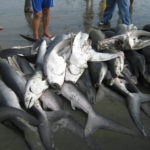
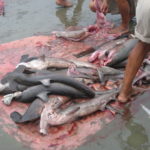
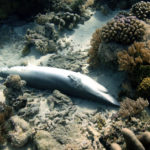
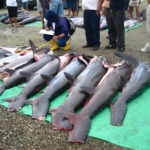
Demand for shark fins
The demand for shark fins is one of the greatest threats facing global shark populations. Similar to how the ivory trade has decimated elephant populations, many shark species are threatened due to demand for their fins. In fact, fins from as many as 73 million sharks end up in the global market every year, with some coming from species that are considered at high risk of extinction. As a result, some shark populations have declined by more than 90 percent compared to historic levels. Although the brutal and wasteful act of shark finning — slicing the fins off a shark, often still alive, and dumping the animal overboard to bleed to death — is illegal in U.S. waters, fins from countries with no finning regulations are still imported into our country every year, mainly for use in shark-fin soup.
This is particularly troubling since shark populations are especially vulnerable to exploitation. Many of the species targeted for their fins have long lifespans, mature slowly, and produce relatively few young, making them very slow to recover from unsustainable fishing.
Closing the loophole
To be fair, shark conservation in the United States has come a long way in recent decades. Over the past 20 years, Congress has passed several pieces of legislation to stop finning in U.S. waters, including the Shark Finning Prohibition Act in 2000 and the Shark Conservation Act in 2010.
Although both laws were great steps forward for shark conservation, legislation must fix the loophole allowing importation of fins. The U.S. is still indirectly incentivizing shark finning by importing fins from countries that have no regulations against finning. And although finning is illegal here, unfortunately it still happens. The most recent case involves a bust of a Key West shrimp vessel loaded with dismembered fins.
Once a shark fin is detached and enters the market, it is nearly impossible to determine whether it was removed from a shark that was caught for its meat or from a shark that was finned and then dumped at sea. Any bowl of shark-fin soup in the United States could contain fins from a finned shark. The best way to ensure that the U.S. is not supporting shark finning would be an outright ban on the trade of shark fins.
Consequences of finning
The fin trade not only has dire ecological consequences, it also can affect coastal tourism. According to a 2016 independent economic report commissioned by Oceana, shark-related dives in Florida alone generated more than $221 million in revenue and fueled over 3,700 jobs in 2016. This stands in stark contrast with the total U.S. shark fin export market, which was worth only $850,000 the same year.
A national ban on the trade of shark fins would not only protect sharks, remove the United States from the global-fin trade, and empower the U.S. to encourage other countries to do the same, but would also ensure that dive businesses continue to thrive. If sharks disappear so too could the jobs that depend on healthy ocean ecosystems.
Support for a ban on shark fins is not limited to just one industry or region. Twelve states, 40 airlines, 20 shipping companies, 85 surfers and surf businesses, 150 scientists, over 150 chefs, multiple recreational fishing groups and over 500 U.S. organizations and businesses all either support a national fin ban or have implemented their own ban. According to a 2016 national poll, there is broad bipartisan support for the legislation, with eight in 10 Americans supporting such a ban.
Sharks are among the oldest living vertebrate predators on the planet, originating around 420 million years ago, almost 200 million years before dinosaurs walked the Earth. They have survived mass extinction events and shifting ocean ecosystems. The grim reality, however, is that they may not survive contact with humans if we don’t act to save them before it’s too late.
To protect sharks, we must end the demand for shark fins, starting here at home. It is time for Congress to demonstrate leadership and pass this important legislation.
Get involved
The Shark Fin Sales Elimination Act has a good chance of passing this year, but right now, it needs an extra push to help get it across the finish line in Congress. Here are a few ways you can help:
Learn more
Visit oceana.org/FinBanNow to learn more about the global shark-fin trade and why we need a national ban in the United States. Tell Congress to pass the fin ban by calling your state representatives and senators. You can also add your voice to Oceana’s petition.
Contact Congress
In the House of Representatives, Rep. Rob Bishop (R-UT), Chairman of the House Natural Resources Committee, can decide whether to allow this bill to move forward out of committee. House leadership, including Majority Leader Kevin McCarthy (R-CA) and Majority Whip Steve Scalise (R-LA), have the authority to bring this legislation to a vote on the House Floor.
Please contact these three members and ask them to support the Shark Fin Sales Elimination Act and keep this bill moving forward in Congress.
- Representative Bishop’s office: 202-225-0453, Facebook
- Leader Kevin McCarthy’s office: 202-225-4000, Twitter; Facebook; Instagram
- Representative Steve Scalise’s office: 202-225-3015, Twitter; Facebook; Instagram
Tweet your support:
Call on leaders in the U.S. House of Representatives to pass the Shark Fin Sales Elimination Act by clicking this link. You will be re-directed to your Twitter account with the message below automatically added to your Twitter status box — simply click to tweet.
“The global shark fin trade is one of the greatest threats to sharks worldwide. The U.S. must pass the Shark Fin Sales Elimination Act and ban the trade of shark fins. @SpeakerRyan @NancyPelosi @GOPLeader @SteveScalise @WhipHoyer”
By guest author Whitney Webber, Oceana Campaign Director
The post What You Can Do for Sharks appeared first on Scuba Diver Life.
from Scuba Diver Life https://ift.tt/2LVShQt
Friday, July 27, 2018
Self-Care A-Z: Social Worker Self-Care from an International Perspective
from The New Social Worker Online — the professional social work careers magazine https://ift.tt/2Ooz5fF
Top Four Shark Encounters in the Bahamas
Seeing a shark during a dive is a highlight for any scuba diver. Sadly, this is becoming a rarer occurrence all over the world as threats to sharks multiply and their numbers continue to fall. Some countries, however, understand the value of sharks to both their economy and environment so have made big changes to protect them. The Bahamas joined that list in 2011, becoming a shark sanctuary and protecting all sharks in their waters from being killed. Because of this focus on protection, the Bahamas has become synonymous with great shark dives. Here are four of the top shark encounters in the Bahamas.
Oceanic whitetip sharks, Cat Island
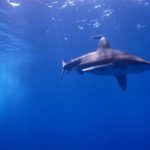
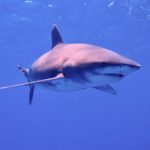

Migrating tuna attract oceanic whitetips to Cat Island. The long, thin island sits right at the edge of the continental shelf, bringing the Atlantic’s deep waters close to shore. Oceanic whitetip sharks are large, pelagic requiem sharks. This stocky shark’s most distinctive features are its long, white-tipped, rounded fins. The first dorsal fin is distinctively large and rounded, and the paddle-like pectoral fins are very long and wide. They are quite stocky and can grow up to 13 feet long (4 m).
Depleted in much of their range, the oceanic whitetip population of the outer Bahamian islands is still thriving, making this a unique and rare encounter. The best time to see them is in April and May, when both the sharks and sport fishermen are there to land a big catch. The species is usually solitary, but individuals congregate around Cat Island when food is plentiful.
Boats attract the sharks by throwing dead fish into the water…and then waiting. The first sign of arrival is the distinctive white dorsal fin popping out of the water. The sharks hang out just under the surface and down to about 40 feet (12 m). With the clear, blue water and amazing visibility, the sharks look spectacular.
Monitor your depth closely during these dives as although you are just under the surface, you are diving in very deep water where you may not even see the bottom. To get here, first fly to Nassau on New Providence and catch a smaller plane to Cat Island.
Tiger sharks, Grand Bahama
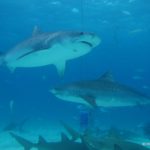
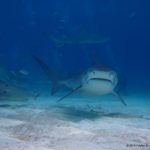

Grand Bahama is a well-known vacation destination and home to the famous Tiger Beach dive site, located on the island’s west end, roughly 20 miles (32 km) off the coast. The best time to see tigers here is between October and January when numbers are usually greater.
Tiger sharks are so named for the beautiful stripes on their bodies which are quite vivid when they are young and fade with age. Growing up to 18 feet (5.5 m) long and weighing up to 2,000 pounds (907 kg), they are an awesome sight up close. Tigers are the fourth largest shark and second-largest predatory shark, behind only the great white.
Tiger Beach is quite shallow, so wear extra weight to keep you planted on your knees in the sand while you sit and watch the show. Again, boats will use bait to entice the sharks in. Lemon sharks and nurse sharks frequently appear as well.
One of the Bahamas’ most popular destinations, Grand Bahama is less than 60 miles from the Florida coast, making it a fast, easy and affordable flight.
Great hammerhead sharks, Bimini
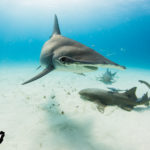
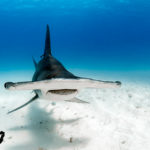
Great hammerheads, the largest of the species, can reach maximum lengths of 20 feet (6 m). And with their distinctive head shape and long, graceful bodies, this makes for an unforgettable encounter. Bimini has three islands: North, South, and East Bimini, with most dive operators running out of North Bimini. The dive sites are quite close to shore and only about a 20-minute boat ride. The dive site itself is very shallow, so the same applies as at Tiger Beach — you’ll want to overweight yourself to stay stable on your knees while you watch the show.
A shark wrangler will hand-feed these beautiful sharks, bringing them extremely close to divers. Bull sharks and nurse sharks will likely be hanging around nearby as an added bonus. The best time to see them around Bimini is from December to April.
Just 50 miles (80 km) off Florida’s coast, Bimini is the closest Bahamian island to the United States. The main airport is on South Bimini and it’s quick and easy to travel to North Bimini via water taxi if you’re using a dive operator there.
Caribbean reef sharks, New Providence
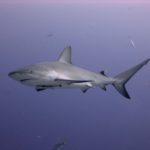
New Providence is the most populated Bahamian island and home to the capital, Nassau. Most dive sites are southwest of New Providence, thanks to the deep trench called the “Tongue of the Ocean” that nears land here. A short boat trip delivers you to sites with plentiful Caribbean reef sharks, which display the characteristic shark form. They’ve got long, powerful, streamlined bodies, a large dorsal fin, and greyish upperparts fading into a white underside.
The sharks have made their permanent home here, so they are common on these sites without baiting. If you wish for an up-close encounter, some dive operators feed the sharks, which can be an exhilarating experience. Unlike the other experiences listed here, you can see Caribbean reef sharks year-round.
Nassau has a busy international airport with direct routes to many cities worldwide. If you’re flying on to an outer island, you’ll likely connect through Nassau as well.
Choosing an operator
Many dive operators run these trips; some are land-based, and some are liveaboard. With a little research you can find the one that suits your needs, but whichever you choose, be sure to listen closely to recommendations and safety briefings when diving with any sharks. Get to know local regulations and protocols. Safety for both you and the sharks is paramount to allowing continued interactions in the future.
The post Top Four Shark Encounters in the Bahamas appeared first on Scuba Diver Life.
from Scuba Diver Life https://ift.tt/2Amdz8C
Thursday, July 26, 2018
Elizabeth M. Z. Farmer New Dean at University of Pittsburgh School of Social Work
from The New Social Worker Online — the professional social work careers magazine https://ift.tt/2JYbPll
Sustainability: Eco-Friendly Solutions For Building a Green Healthcare Facility - CME Corp eBook
eBook Now Available
There are 5,534 registered domestic hospitals, according to the American Hospital Association. Each one of those facilities is estimated to generate up to 25 pounds of waste per day per patient. The math seems to indicate that health care centers produce an endless stream of garbage at an unsustainable rate. Furthermore, it’s only one industry and one waste source in an ever-growing country, struggling to find solutions to landfill overload. As regulations tighten to relieve the burden trash puts on our ecosystem, planners and buyers are searching for eco-friendly solutions to medical facility equipment and materials.
from CME Insiders https://ift.tt/2AeJM1o
Can You Guess Which Teeth Belong to Which Shark?
While you may be able to recognize some sharks in the water or by their photos, can you guess which teeth belong to which sharks in this nine-question quiz? As noted by Sharks Info, shark teeth are unique compared to most others. Humans and most animals have teeth rooted in their jaw, but sharks’ teeth are embedded in their gums. This allows them to replace their teeth without pain on a regular basis, either individually as they are damaged or in entire rows of teeth.
A shark can have up to 3,000 teeth in its mouth at any given time depending on the species, with several rows of teeth held out of sight in a special channel in their jaw as shown in the photo below.
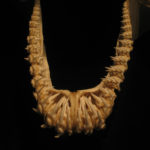
As the animal must replace the teeth in front, a row in back moves forward to replace the front row like a conveyor belt. In this manner, a shark can lose over 30,000 teeth during its lifetime, so it’s no wonder divers often find shark teeth along the ocean bottom. Now, here’s your chance to see if you can correctly guess which teeth belong to which shark.
Can You Guess Which Teeth Belong to Which Shark?
Congratulations - you safely navigated our Shark Teeth Quiz!
You scored %%SCORE%% out of %%TOTAL%%.
If you enjoyed this toothsome quiz, find out what you can do to help protect endangered sharks. Check our list of top five shark conservation groups where — for the price of a cup of coffee, you can help make a difference.|
Question 1
|
|
A
|
Bull
|
|
B
|
Tiger
|
|
C
|
Great White
|
|
D
|
Blue
|
Size: Average of 15 feet (4.6 m). Large specimens can grow to as much as 20 feet in length (6.1 m)
Weight: Average of 5,000 pounds (2,268 kg) though larger specimens can weigh more
Average life span: Up to 70 years
Preferred prey: “Young great white sharks eat fish (including other sharks) and rays. As they grow, the sharks’ favorite prey becomes sea mammals, especially sea lions and seals.”
Commonly found: In cool, coastal waters throughout the world
Endangered status: Vulnerable — at high risk of extinction in the wild
Threats to survival: Coveted as a gamefish, great whites are victims of both overfishing and accidental bycatch in gill nets.
|
Question 2
|
|
A
|
Mako Shark
|
|
B
|
Wobbegong Shark
|
|
C
|
Great White Shark
|
|
D
|
Thresher Shark
|
Size: Average of 15 feet (4.6 m). Large specimens can grow to as much as 20 feet in length (6.1 m)
Weight: Average of 5,000 pounds (2,268 kg) though larger specimens can weigh more
Average life span: Up to 70 years
Preferred prey: “Young great white sharks eat fish (including other sharks) and rays. As they grow, the sharks’ favorite prey becomes sea mammals, especially sea lions and seals.”
Commonly found: In cool, coastal waters throughout the world
Endangered status: Vulnerable — at high risk of extinction in the wild
Threats to survival: Coveted as a gamefish, great whites are victims of both overfishing and accidental bycatch in gill nets.
|
Question 3
|
|
A
|
Sand-tiger Shark
|
|
B
|
Hammerhead Shark
|
|
C
|
Blue Sharks
|
|
D
|
Fossilized Shark Teeth
|
Whether it’s a modern shark tooth or a fossilized shark tooth, it can be extremely difficult even for an expert to identify the species of an individual tooth since most teeth are found mixed and scattered. Within the same species, many shark teeth also vary in shape, size, and curvature with regards to position within the jaw. The age and sex of a shark can also play a factor in tooth morphology. So, while it is fairly easy to determine the genus of a shark tooth, it is almost impossible to determine whether that tooth is from a bull shark or Caribbean reef shark, for example.
|
Question 4
|
|
A
|
Smalltooth sand tiger shark
|
|
B
|
Wobbegong Shark
|
|
C
|
Basking Shark
|
|
D
|
Caribbean Reef Shark
|
Size: Up to 12 feet (3.7 m)
Weigh: Up to 637 pounds (289 kg)
Average life span: Unknown
Preferred prey: Small bony fishes, squids, and crustaceans
Commonly found: On or near the bottom of the continental and island shelves in places like Japan and New Zealand though they are sometimes observed in shallow water
Endangered status: Vulnerable — at high risk of extinction in the wild
Threats to survival: They fall prey to accidental catching in gill nets. Humans also harvest them for their flesh and liver.
|
Question 5
|
|
A
|
Whale Shark
|
|
B
|
Nurse Shark
|
|
C
|
Galapagos Shark
|
|
D
|
Silky Shark
|
Size: Average of 7.5 to 9.75 feet (2.3 to 3 m). Larger specimens can be up to 14 feet (4.3 m).
Weight: Average of 200 to 330 pounds (91 to 148 m)
Average life span: Up to 25 years
Preferred prey: While they can crush and eat shellfish and even coral, they prefer fish, shrimp, and squid.
Commonly found: In the warm, shallow waters of the western Atlantic and eastern Pacific oceans
Endangered status: They have no special conservation status.
Threats to survival: The closeness of their habit to human activities is putting pressure on the species.
|
Question 6
|
|
A
|
Silvertip Shark
|
|
B
|
Oceanic Whitetip Shark
|
|
C
|
Blacktip Reef Shark
|
|
D
|
Blue Shark
|
Size: Up to 6 feet (1.8 m)
Weight: Up to 64 pounds (29 kg)
Average life span: 12 to 25 years
Preferred prey: They prefer reef fish, but also feed on stingrays, crabs, mantis shrimp, other crustaceans, cephalopods, and mollusks as well other animals indigenous to certain areas such as sea snakes in northern Australia.
Commonly found: In shallow waters on and near coral reefs. They also live in mangrove areas and even in fresh water near the sea.
Endangered status: Near Threatened — Close to qualifying for or is likely to qualify for a threatened category in the near future
Threats to survival: “Regularly caught by inshore fisheries and vulnerable to depletion because of their small litter sizes and long gestation periods.” Flesh, fins, and are liver utilized for human consumption, but these sharks have limited market value due to their small size.
|
Question 7
|
|
A
|
Tiger Shark
|
|
B
|
Broadnose Sevengill Shark
|
|
C
|
Bronze Whaler Shark
|
|
D
|
Bull Shark
|
Size: Average of 7 to 11.5 feet (2 to 3.5 m)
Weight: Average 200 to 500 pounds (91 to 227 m)
Average life span: 16 years
Preferred prey: Almost anything they see, from fish to dolphins and even other sharks
Commonly found: In shallow, warm waters of every ocean. They even venture into brackish water far inland via rivers and tributaries
Endangered status: Near Threatened — Close to qualifying for or is likely to qualify for a threatened category in the near future.
Threats to Survival: “Fished widely for their meat, hides, and oils, and their numbers are likely shrinking. One study has found that their average lengths have declined significantly over the past few decades.”
|
Question 8
|
|
A
|
Blue Shark
|
|
B
|
Shortfin Mako Shark
|
|
C
|
Goblin Shark
|
|
D
|
Copper Shark
|
Size: Up to 13 feet (4 m)
Weight: Up to 1,102 pounds (500 kg)
Average Life Span: 29 to 32 years
Preferred prey: Tuna and billfish, but they also prey on squid, dolphins, porpoises, blue sharks, bonito, sea turtles, and mackerels.
Commonly found: Around the world in warm and temperate seas
Endangered Status: Vulnerable — At high risk of extinction in the wild
Threats to survival: Prized as gamefish, these makos are fished for recreation and commercially. Flesh and fins are utilized for human consumption, and they are also often bycatch victims of the tuna and swordfish fishing industries.
|
Question 9
|
|
A
|
Gray Reef Shark
|
|
B
|
Thresher Shark
|
|
C
|
Great Hammerhead Shark
|
|
D
|
Lemon Shark
|
Size: Average of 8 to 25 feet (2.4 to 7.6 m)
Weight: A maximum of 767 pounds (348 kg)
Average life Span: 22 years
Preferred prey: Squid, octopus, crustaceans, and small schooling fish such as bluefish, needlefish, lancetfish, lanternfish, menhaden, shad, mackerel, and others. Scientists think they stun prey with blows from their powerful tails.
Commonly found: In warm and temperate waters worldwide. “They prefer cool pelagic waters but will wander into coastal areas as well in pursuit of fish. Juvenile threshers are often found close inshore and in shallow bays.”
Endangered Status: Vulnerable — At high risk of extinction in the wild
Threats to Survival: Prized as gamefish, threshers are fished for recreation and commercially especially in other parts of the world where their flesh, livers, hides, and fins are utilized for human consumption. “This species is especially vulnerable to fisheries exploitation (target and bycatch) because its habitat occurs within the range of many largely unregulated and under-reported gillnet and longline fisheries, in which it is readily caught.”
|
Question 10
|
|
A
|
1 & 3
|
|
B
|
1 & 4
|
|
C
|
2 & 3
|
|
D
|
2 & 4
|
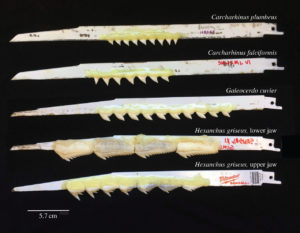 |
 |
| Drawing distributed under a CC BY-SA 4.0 license appearing in Royal Society Open Science included in Modelling tooth–prey interactions in sharks: the importance of dynamic testing by Katherine A. Corn, Stacy C. Farina, Jeffrey Brash, and Adam P. Summers. | Drawing distributed under a CC BY-SA 4.0 license appearing in Royal Society Open Science included in Modelling tooth–prey interactions in sharks: the importance of dynamic testing by Katherine A. Corn, Stacy C. Farina, Jeffrey Brash, and Adam P. Summers. |
The scientists tested these teeth at “biologically relevant speeds and found differences in tooth cutting ability and wear. Test species were chosen to represent three distinct tooth morphologies: triangular and pointed with small serrations across the edges (silky shark and sandbar shark), triangular and pointed with large serrations and a deep posterior notch (tiger shark), and elongated teeth with a series of cusps (sixgill shark).”
The silky and sandbar sharks (the top two in the saw photo) were the clear winners with the tiger shark (in the middle of the photo) coming in second. Teeth from the bluntnose sixgill shark (at the bottom of the photo) showed a poor cutting ability compared with all the other shark teeth, but “they also showed no wear with repeated use. Some shark teeth are very sharp at the expense of quickly dulling, while others are less sharp but dull more slowly.”
The post Can You Guess Which Teeth Belong to Which Shark? appeared first on Scuba Diver Life.
from Scuba Diver Life https://ift.tt/2JVHKmw



